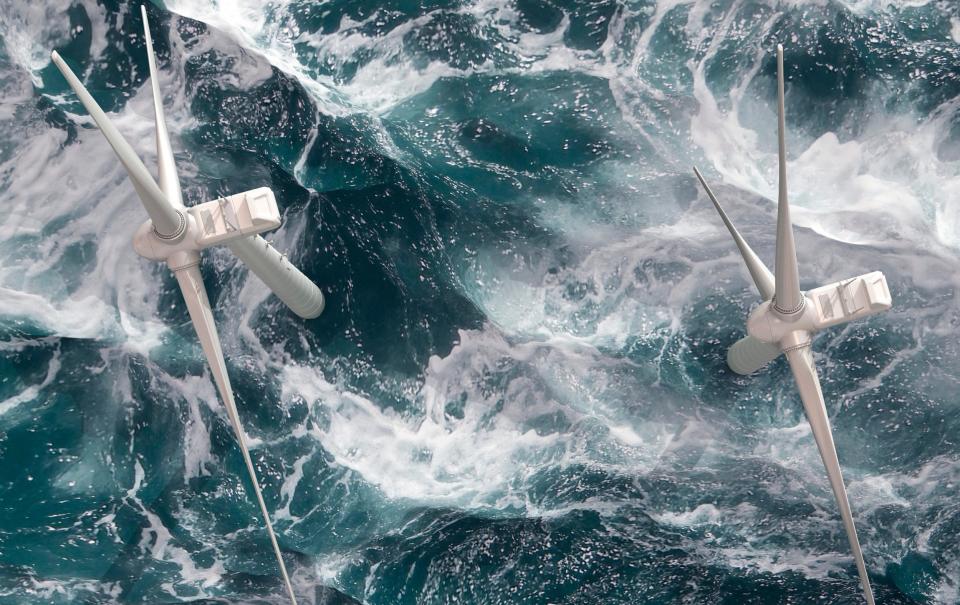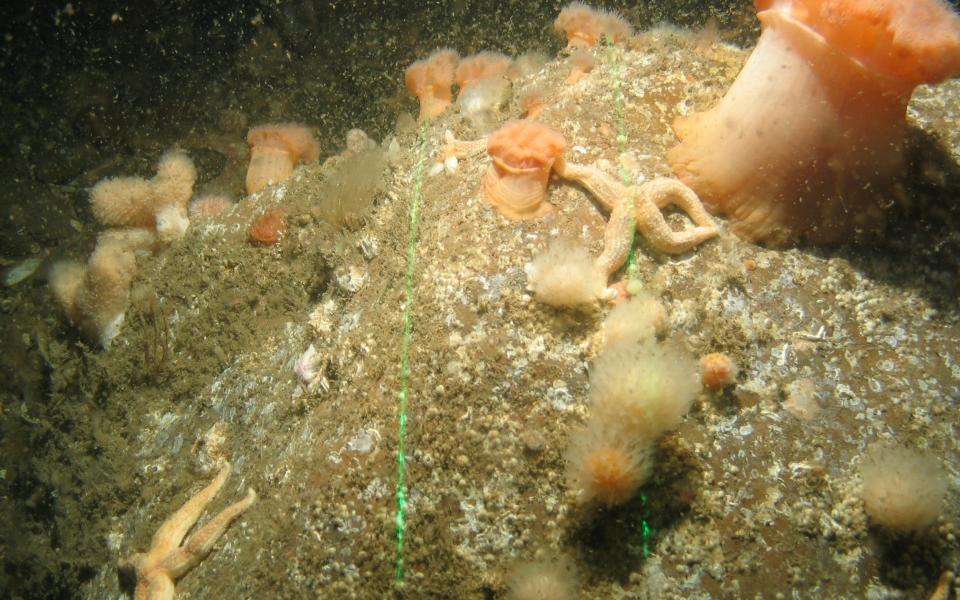How shipwrecks and unexploded bombs threaten BP’s wind turbine hopes

Captain Ellis was below deck in bed on the Linda Blanche when his nephew rushed down to alert him to an approaching submarine: “She’s a German submarine, uncle, and she’s close up to us.”
Their order came a few moments later from the German lieutenant 100 ft away in the Irish Sea, on the morning of January 30, 1915. “I am going to sink your steamer; prepare to get out of her. I will give you ten minutes to get clear.”
Before long, the crew of the Linda Blanche was rowing to safety and she was steadily sinking to the seabed, blown apart by the Germans’ bombs, Captain Ellis recalled to the North Wales Chronicle and Advertiser days later.
For the past 107 years, the wreck of the 170-foot steamer has lain on the sea floor roughly 18 miles north-west of Liverpool, little noticed by ferries and fishing trawlers passing overhead.
In recent months, however, she has been the focus of renewed attention: a relic of the coal-powered era is now in the way of the cleaner energy generation trying to take its place.
FTSE 100 energy giant BP’s radar has picked up the shipwreck as it scours the more than 2,000-square kilometres of UK and Irish seabed for which it is paying a fortune to plant hundreds of wind turbines over the next few years.
Under chief executive Bernard Looney, BP wants to develop 50GW of renewable power by 2030, more than eight times its pipeline in 2019, as it tries to diversify from its core business of oil and gas production amid the global push to cut carbon emissions.
The £74bn company plans to invest billions to develop its Morgan and Mona wind farms in the Irish Sea and Morven project off the east coast of Scotland, which should be able to generate enough power for more than six million homes. BP and project partner EnBW face a £900m bill for seabed rights for the Irish Sea alone.
The farms and other projects being developed in the US mark BP's first venture into offshore wind. Looney has staked his reputation on his expectation he will be able to generate 8-10pc returns from BP's renewables portfolio, as he seeks to convince investors to turn away from cash-rich oil and gas.
As they work out exactly where and how they should plant each turbine for maximum yield, bosses want to get to know every tilt of the land and roll of the sea, avoiding shipwrecks, unstable sand, unexploded bombs, protected fish, birds and plants.

It is key to the farms’ viability, avoiding expensive and slow redesigns as BP and rivals try to build within the tight time-frames and budgets central to the success of the technology and their own balance sheets.
“You have to make sure you don't have any schedule problems,” says Huw Traylor at consultancy DNV. “That’s a real issue: your installation schedule is based on the schedule for which you get paid.
“There are instances where developers have found things that have really knocked things back, such as bad geotechnical conditions.”
Wind turbines have become a feature of the British landscape in recent years, with more than 11,000 installed on shore and out to sea, generating around one quarter of Britain’s electricity over the year.
They are set to proliferate, with the UK Government pushing to increase offshore wind generation capacity five-fold by 2030 and Crown Estate Scotland auctioning off 7,000km-squared of seabed land this year to wind developers.
Energy giants – including BP’s rivals Shell and SSE – are jostling for space, and developing ever bigger turbines in the push for yield, with some rotor blades now longer than football fields and towers as tall as the Statue of Liberty.
“Offshore you've got a large area, you’ve got fewer objections and you can build at a really big scale,” adds Traylor. “That’s the driver.”
With such a big bet, BP needs to get the work on its wind farms right, dispatching fleets of small drone boats and larger crewed boats to gather soil samples and radar data as part of the extensive survey work to help it choose which foundations the turbines need and where they can be placed.
“It means we can plan correctly so we know exactly what's going to happen when we come in with the installation vessels,” says Richard Haydock, BP's project director for offshore wind.
So far, the company’s boats have spent more than 600 days out at sea this year and last. Teams of around 40 on crewed vessels work in 12-hour shifts, for up to 28 days at a time.
Among the crew are “marine mammal observers” and fishing industry representatives, to try to cut BP’s impact on wildlife and make sure it doesn’t interfere with fishing boats.
Some of the work is “really weather sensitive; we can only do it in about one-and-a-half metre seas,” adds Craig Allinson, a senior surveyor at BP. “It's always really busy trying to keep the vessel operating as efficiently as we can, and safely swapping between the different modes.”

Though many shipwrecks in its area were already known, such as the Linda Blanche, there are still surprises: BP has reported to authorities the wreck in its Morven wind farm area, of what appears to be a previously unknown wooden lifeboat vessel.
“We don't want to have any impact – a lot of them are archaeological locations,” adds Allinson.
Searches have also turned up potentially more dangerous obstacles: large objects which could be unexploded bombs.
“It’s a big issue for the projects,” says Allinson. "We need to make sure we are only contacting the seabed where we are sure we are not going to encounter any unexploded ordnance."
"In a past life I've seen some unexploded ordnance go up, which was quite dramatic," adds Haydock. "It is something that can happen and we need to make sure we take the right precautions.”
Existing maps cannot be relied upon, particularly for such critical information. “There’s a time limit on a lot of this data, as the seabed sediments are quite mobile, so things move around,” Allinson adds.
“Data that has existed in the past is no longer really appropriate for us to use. We have to gather it all again, and it's got a shelf-life of its own.”
Amid the rush of interest in UK offshore wind, BP's survey vessels are far from the only ones out at sea. “There’s quite a bit of activity, but it's limited by the availability of the survey companies,” says Simon Davies, geotechnical consultant at Xodus Group. “Everybody is going to be competing."
Despite the extensive surveying so far, BP says there remains a “huge amount” yet to be done over the next two years. The pace needs to be rapid, with investors and the UK government clamouring for new energy supply and returns.
“We want to make sure we get to the end as efficiently as possible, get the wind turbines installed, and get to generation as quickly as we possibly can,” adds Haydock. Many more Linda Blanches had better not be in their way.

 Yahoo Finance
Yahoo Finance 